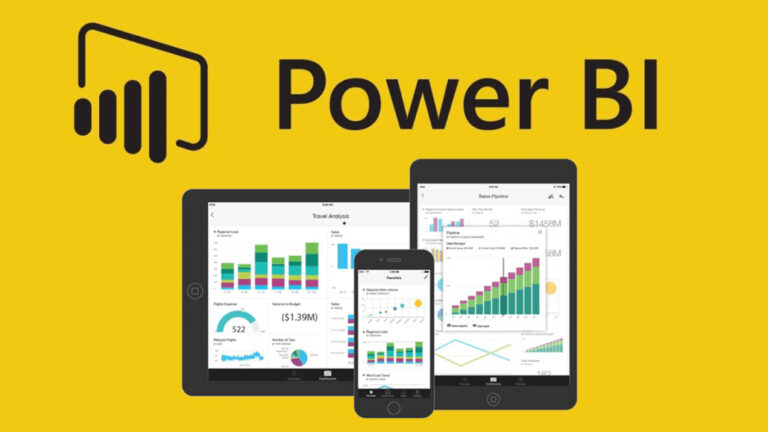Leave a Comment / Uncategorized / By Kesha
In today’s data-driven world, businesses are inundated with vast amounts of information. But data alone doesn’t lead to success — it’s the insights gleaned from that data that truly matter. Enter business analytics, a powerful tool that transforms raw data into meaningful insights, helping businesses make better decisions, improve operations, and drive growth.
What is Business Analytics?
Business analytics (BA) is the process of collecting, analyzing, and interpreting data to make informed business decisions. It involves using statistical methods, technologies, and data science to analyze business performance and provide actionable insights. BA can help companies answer critical questions, such as:
- Why did something happen?
- What is likely to happen in the future?
- What should we do next?
The primary aim of business analytics is to support decision-making that leads to improved performance and a competitive edge. It combines historical data with predictive models and other analytical tools to suggest optimal strategies.
Types of Business Analytics
There are four key types of business analytics:
- Descriptive Analytics:
Descriptive analytics focuses on summarizing historical data to understand what has happened in the past. This can include performance reports, financial metrics, and KPIs (key performance indicators). For example, sales reports for the last quarter or trends in customer behavior. - Diagnostic Analytics:
Diagnostic analytics digs deeper into the why behind the numbers. It analyzes the root causes of trends and anomalies. For example, if sales drop during a particular month, diagnostic analytics might reveal that it was due to increased competition or a marketing failure. - Predictive Analytics:
Predictive analytics uses statistical algorithms, data mining, and machine learning techniques to forecast future outcomes based on historical data. For instance, it can predict customer buying behavior, sales trends, or risk factors. It helps businesses anticipate changes and prepare accordingly. - Prescriptive Analytics:
Prescriptive analytics goes a step further by recommending specific actions to achieve desired outcomes. It not only suggests what could happen but also provides strategies to take advantage of future opportunities or mitigate potential risks. For example, it might suggest adjusting pricing strategies based on predicted customer demand.
Why Business Analytics Matters
- Informed Decision-Making:
Data-driven decision-making is critical in modern business. Companies that leverage business analytics make decisions based on facts rather than assumptions or intuition. This leads to better results, whether it’s improving marketing efforts, optimizing operations, or enhancing customer satisfaction. - Increased Efficiency:
By analyzing data on operational processes, businesses can identify bottlenecks and inefficiencies. Whether it’s supply chain optimization, reducing production waste, or streamlining customer service processes, analytics helps organizations operate more efficiently and reduce costs. - Improved Customer Insights:
Understanding customer behavior is crucial for business success. Business analytics provides insights into customer preferences, purchasing habits, and needs, allowing businesses to tailor products, services, and marketing strategies to better serve their audience. Personalization, one of the key trends in modern business, is fueled by analytics. - Competitive Advantage:
Companies that embrace business analytics can identify trends and opportunities faster than their competitors. Predictive models enable businesses to anticipate market shifts and respond proactively, positioning themselves ahead of the competition. It allows for innovation and agility, critical components in maintaining a competitive edge. - Risk Management:
Every business faces risks, from economic downturns to supply chain disruptions. Predictive and prescriptive analytics can identify potential risks before they become critical issues. This allows businesses to develop contingency plans and mitigate risks effectively.
How to Implement Business Analytics
Successful implementation of business analytics involves several key steps:
- Identify Key Business Questions:
Analytics should be guided by specific business goals or challenges. Start by identifying the key questions you need answers to. For example: “What drives customer loyalty?” or “How can we reduce production costs?” - Collect Relevant Data:
Data collection is the foundation of analytics. It can come from various sources such as customer databases, sales transactions, social media, or operational systems. Ensure the data is clean, accurate, and comprehensive. - Use the Right Tools and Techniques:
There are numerous business analytics tools available, from basic spreadsheet software to advanced AI-driven platforms. Tools like Tableau, Power BI, SAS, and R provide powerful visualization and statistical analysis capabilities. Machine learning algorithms and artificial intelligence can further enhance predictive and prescriptive analytics. - Develop a Data-Driven Culture:
To truly benefit from business analytics, companies must foster a data-driven culture. This means that decisions at all levels of the organization should be based on data analysis. Training employees to understand and use analytics tools effectively is essential. - Iterate and Improve:
Business analytics is not a one-time activity. As market conditions and business goals evolve, so should your analytics efforts. Continuously gather data, analyze new trends, and adjust strategies to ensure you stay ahead.
Real-World Applications of Business Analytics
- Retail:
Retailers use business analytics to manage inventory, optimize pricing strategies, and enhance customer loyalty programs. For example, a retailer might use predictive analytics to forecast demand for certain products and adjust stock levels accordingly. - Finance:
Financial institutions leverage analytics for risk management, fraud detection, and portfolio management. Predictive models help them identify risky borrowers and make informed investment decisions. - Healthcare:
In healthcare, analytics is used to improve patient outcomes, streamline operations, and manage costs. Hospitals analyze patient data to predict disease outbreaks, optimize resource allocation, and personalize treatment plans. - Marketing:
Marketing teams use analytics to understand customer preferences, track the success of campaigns, and segment target audiences. Insights from customer behavior data help them design personalized and more effective marketing strategies.
Challenges in Business Analytics
Despite its many benefits, implementing business analytics is not without challenges. Some common obstacles include:
- Data Quality Issues:
Inaccurate or incomplete data can lead to incorrect insights and poor decision-making. - Data Silos:
When data is stored in separate departments or systems, it becomes difficult to integrate and analyze holistically. - Skill Gaps:
Many organizations lack employees with the necessary skills to fully leverage analytics tools and interpret data correctly.
Conclusion
Business analytics is no longer a luxury but a necessity for companies looking to thrive in today’s competitive environment. By making data-driven decisions, businesses can operate more efficiently, understand their customers better, and gain a competitive edge. However, the key to success lies in not only collecting data but also analyzing it effectively and fostering a culture that embraces continuous learning and improvement through analytics.
Incorporating business analytics into your strategy today will empower your organization to be proactive, agile, and positioned for long-term success.


